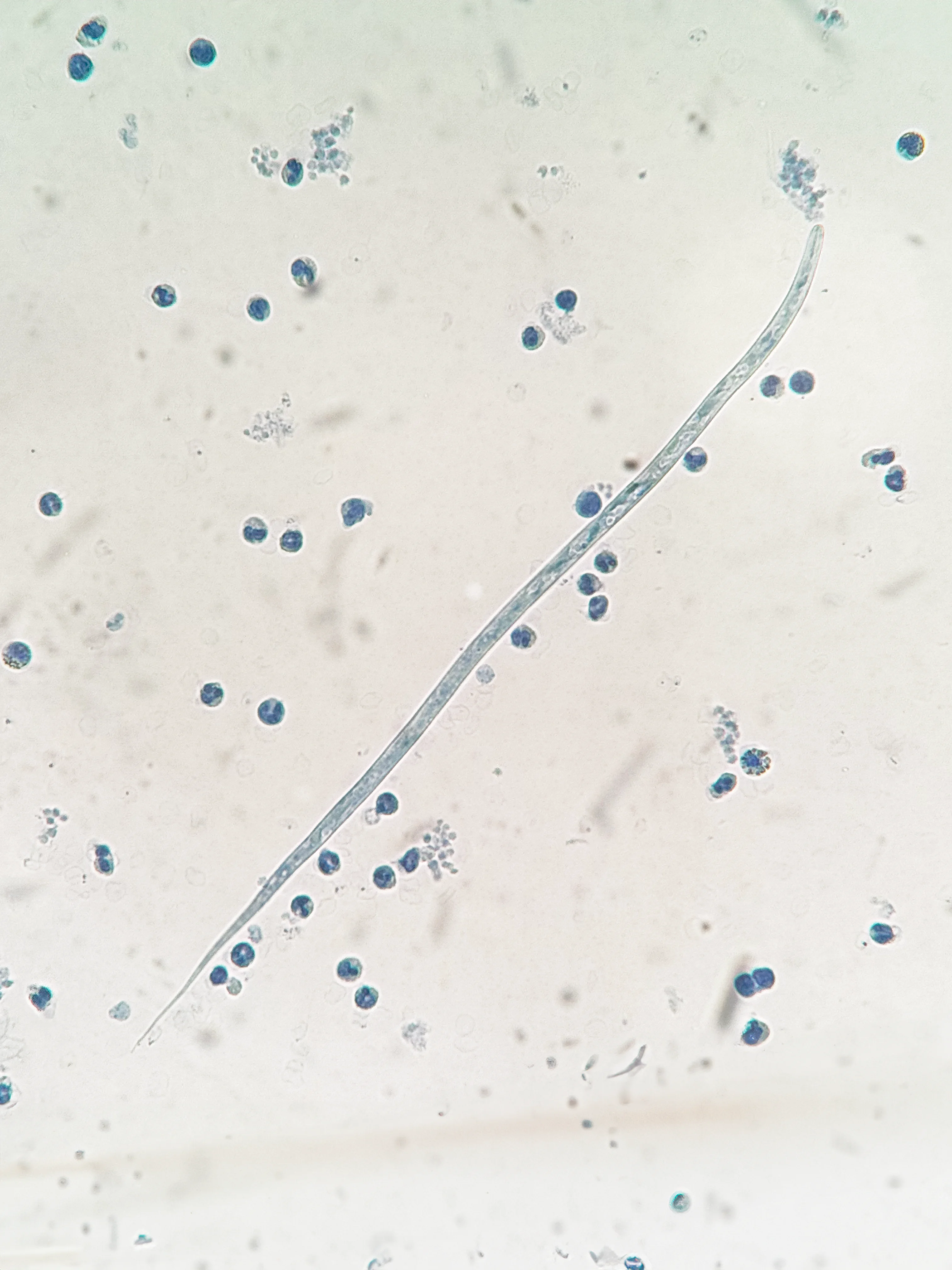
FIGURE Dirofilaria immitis microfilaria on a modified Knott test
Dirofilaria immitis (ie, canine heartworm) is one of the most significant parasitic threats to dogs. The adult worms mate and produce microfilariae in the pulmonary artery that then circulate in the blood and may be detected via different modalities. The stained microfilaria shown here (Figure) was isolated using the modified Knott test, which requires 1 mL of whole blood and 9 mL of 2% formalin in water. After lysing RBCs in the solution and performing centrifugation, the sediment is stained with methylene blue.
The American Heartworm Society recommends testing for both heartworm antigen and microfilariae. Dogs infected with D immitis sometimes have no detectable antigen due to antigen/antibody complexing. Testing for microfilariae allows practitioners to catch positive results in these cases.